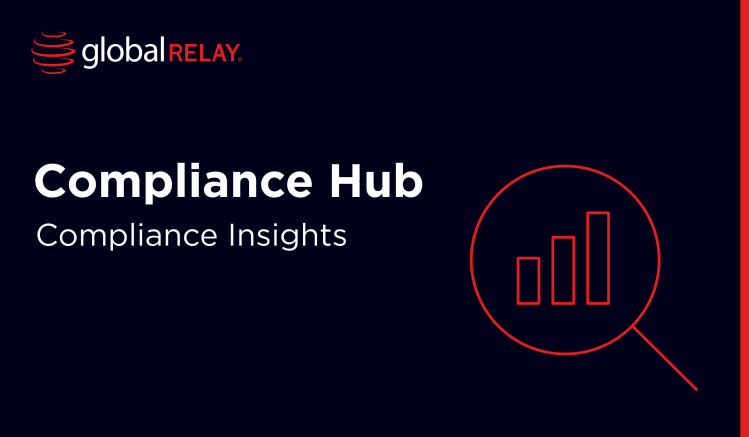
How data loss prevention ensures compliance and security in 2025
Cyber threats and data leaks are at an all-time high in 2025, affecting organizations big and small. Discover what business leaders need to know to safeguard sensitive data, keep up with regulations, and avoid costly breaches.
Written by a human
In brief:
- Data loss prevention (DLP) tools are essential to continually guard against insider threats and support regulatory compliance
- Managing unstructured data, cloud apps, and multi-channel communications demands proactive, real-time data protection measures
- Failing in the DLP arena can lead to steep fines, reputational harm, and failed audits, and more
Understanding the growing data loss threat in 2025
Data breaches are making headlines across industries, and the toll is rising. In 2025, the average cost per breach has soared, with organizations facing not just financial losses but deep reputational wounds.
According to IBM’s Cost of a Data Breach Report 2024, the global average cost of a data breach reached $4.88 million in 2024. More worrying is that the same report found that the average cost is higher in the financial sector, with companies now spending $6.08 million dealing with data breaches.
This record high is driven by the rapid adoption of cloud services and the spread of work-from-anywhere practices, which can put organizations’ data at risk. Even traditional sectors, like healthcare and law, are not immune to breaches.
Regulations like Europe’s General Data Protection Regulation (GDPR), the U.S.’ Health Insurance Portability and Accountability Act, and the Sarbanes-Oxley Act haven’t slowed attackers down, but have made the price of failure far higher. Fines, corrective orders, and audit failures now regularly follow breaches, especially when companies can’t show they had DLP measures in place. The message from regulators is loud and clear; data security is no longer optional, it’s business-critical.
Why data loss prevention should be top-of-mind
Sensitive data protection and data loss prevention for compliance have become central pillars of sound business operations, because of the rippling effect that data breaches can have on an organization, its customers, and future prospects:
- Customer trust depends on data security, and breaches can take years to repair.
- Regulatory fines are growing, with authorities showing less patience for weak controls.
- Competitive advantage often hinges on protecting intellectual property, trade secrets, and personal data.
There are huge financial implications for not protecting personal data. The parent company of credit score agency Equifax was ordered to pay $700m following a data breach in 2017. The personal data of around 147 million people was exposed in this high-profile hacking case that also compromised the sensitive data of almost 14 million British residents. Equifax’s failure to protect customer data was found to be caused by poor security measures including not adhering to security patch schedules.
Data loss prevention: Key risks and compliance challenges
Incidents like the Equifax breach and the similarly high-profile hack affecting Capital One in 2019 demonstrate the devastating consequences of poor data protection measures. In today’s world where millions of cyber crimes are committed every day, organizations in regulated industries face multiple data protection risks, including:
- Insider threat protection: Employees or contractors with access to sensitive data can, intentionally or accidentally expose or misuse it.
- Audit failures: Companies unable to prove robust data protection to regulators may fail compliance audits, resulting in fines or even the suspension of business operations.
- Reputational damage: News of a breach travels fast, meaning that customers, partners, and investors may lose confidence overnight, causing long-term reputational damage.
- Costly regulatory penalties: Failure to comply with laws like GDPR can result in fines of up to 4% of annual global turnover for inadequate data protection.
Essential features for your 2025 data loss prevention strategy
Modern data loss prevention is far more than just antivirus software or firewalls. To be effective, DLP strategies and solutions must offer:
- Constant monitoring: Real-time surveillance of all data movement across on-premise servers, cloud applications, collaboration tools like Slack, and emails.
- Insider threat detection: Tools that spot unusual behavior patterns such as an employee downloading excessive files or emailing sensitive documents outside the organization. Insider threat protection for financial services is especially vital.
- Multi-channel coverage: The ability to track and secure data across multiple platforms and devices, including bring-your-own-device environments and remote work setups.
- Real-time protection: Immediate blocking or quarantining of suspicious activities to prevent leaks before they happen.
- Auditable logs: Detailed reports and logs that support compliance audits, showing how data is accessed, shared, and protected.
Sensitive data protection in the face of unstructured data
One of the toughest parts of DLP is managing unstructured data, which includes information in emails, chat messages, cloud drives, or files scattered across users’ devices. These data types don’t follow a rigid format and can easily slip under the radar without proper monitoring.
Added to this is the challenge of operating across multiple jurisdictions, each with its own rules and requirements for data protection and retention. Adapting to these global compliance requirements necessitates:
- Flexible DLP tools that support custom policies for various regulatory obligations.
- Integration with cloud-based platforms and SaaS tools to monitor data flow wherever it goes.
- Data discovery features to locate and classify sensitive information, even in unstructured formats.
Benefits of data security compliance
A mature DLP program delivers multiple layers of advantages, many of which are business critical in today’s highly-competitive markets and technologically-focused customers. A robust and secure data loss prevention strategy typically needs to cover the following bases:
1. Ensures data is auditable and secure to meet regulatory standards
Typically, cloud DLP solutions for enterprises create detailed, tamper-proof logs of data movements and access patterns. This audit trail makes it straightforward to demonstrate regulatory compliance during inspections and reduces the risk of failing a compliance audit.
2. Protects sensitive data from external breaches and insider threats
By combining monitoring, policy enforcement, and intelligent controls, DLP stops unauthorized users from accessing or sharing personal records, intellectual property, or confidential files, no matter how the threat appears.
3. Streamlines incident response with AI-powered insights
Today’s advanced DLP tools use artificial intelligence (AI) and machine learning to spot unusual patterns much faster than human analysts. Smart alerts and automated workflows mean security teams can respond within minutes, reducing the impact of an incident. IBM’s 2024 Cost of a Data Breach Report cites that organizations that implement extensive use of AI in security saved $1.9M compared to those that didn’t use these solutions.
Proactive prevention means fewer costly breaches, less negative publicity, and minimized business disruption, which amounts to a clear a competitive edge in regulated industries.
Plus, taking a proactive approach reduces the risk of fines, and builds customer and business partner trust. That’s because demonstrating robust data loss prevention can help organizations win contracts and retain clients in fields where security is non-negotiable.
Final thoughts
Effective data loss prevention is an investment in trust, compliance, and business continuity. In 2025, companies with strong DLP not only meet regulations but also strengthen their reputation and competitive standing.
Here are some key steps for organizations in regulated industries to consider to enhance their DLP capabilities:
- Organizations should begin by identifying their vulnerabilities, carefully tracking where sensitive information is stored and determining who has access to it.
- Data encryption is still overlooked by some organizations, but this measure represents an important first-line of defense against bad actors trying to access sensitive data.
- With human error accounting for 24% of all attacks (IBM, Cost of a Data Breach 2024), staff training is equally essential. Well-informed employees are better equipped to avoid mistakes that can lead to breaches, so insider threat protection is an important part of the DLP puzzle.
- Selecting comprehensive data loss prevention (DLP) solutions is vital. Cloud DLP solutions should provide thorough protection across all endpoints, as well as covering cloud platforms and any legacy systems in use.
- With AI and automation become increasingly sophisticated, organizations should look to leverage these tools as part of their breach prevention strategy. Adopting real-time, AI-powered monitoring helps shift away from slow manual checks and relies on automation to detect threats swiftly and efficiently.
- It is also vital to regularly review and update data policies and security controls, ensuring your organization’s data security compliance measures remain effective as regulations and risks continue to evolve.
